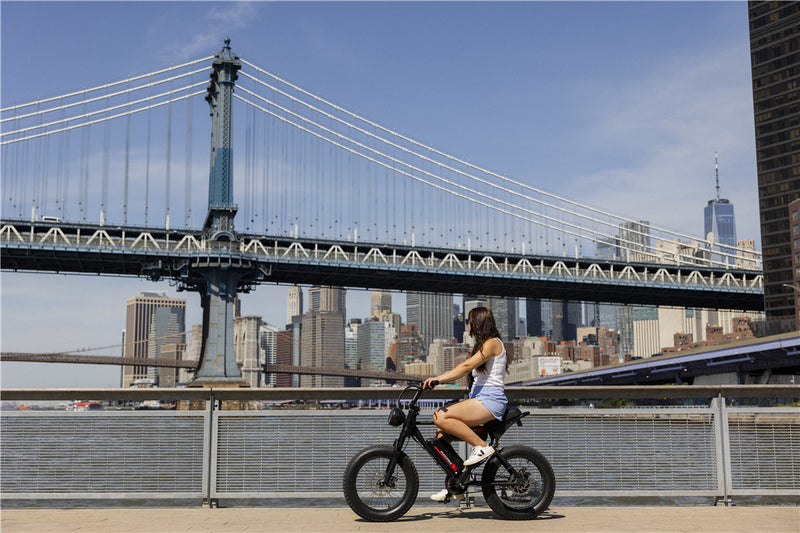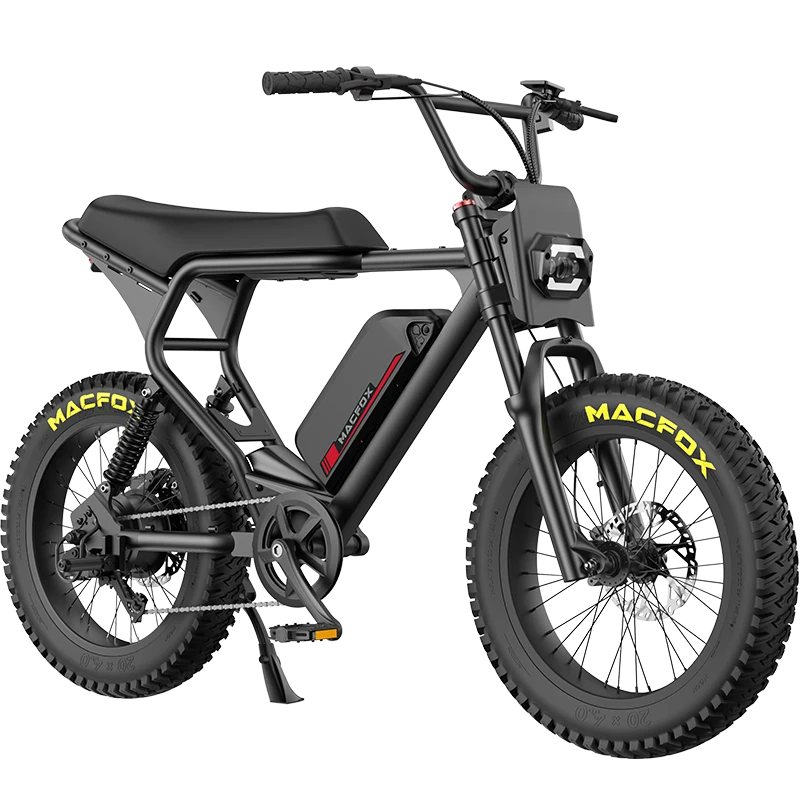The front suspension system plays a role on adult electric bikes to ensure a comfortable and enjoyable riding experience.
Achieving shock pressure is essential to enhance your comfort and stability while navigating terrain during your ride.
Let's discuss the front shock absorber's significance for performance and its pressure adjustment, along with maintenance tips.
The Role and Importance of the Front Shock Absorber
The front suspension plays a role in performing critical tasks.
It provides a cushion against the impact of terrains to make your ride smoother and less bumpy on surfaces.
This padding becomes crucial when navigating bends or descending slopes since it helps maintain balance and control.
Additionally, a set shock absorber can help minimize fatigue, allowing you to enjoy rides without experiencing exhaustion.
Understanding the importance of each role highlights the significance of adjusting the shock pressure to enhance riding enjoyment.

The Basics of Front Shock Absorbers
Two primary varieties of shocks exist air shocks and coil springs.
Air shocks are adjustable. Use air to provide suspension options personalized according to your weight and riding preferences.
This level of adaptability has the potential to enhance your achievements significantly.
Coil springs are more straightforward and long-lasting than their counterparts; however, they lack customization options for different types of springs.
Knowing these distinctions can assist you when deciding on the components for your electric bike configuration.
The Impact of Air Pressure on Riding Performance
The air pressure in the suspension greatly influences the riding experience of your bike.
If the tire pressure is too low, your bike's shocks may not effectively cushion bumps , resulting in a less-than-ideal ride and making biking challenging.
If the pressure is excessive, your vehicle's tires might feel rigid. The shock absorber may not effectively cushion bumps, leading to an impact on your handling and overall comfort while driving.
Achieving performance requires striking a balance that varies based on factors like weight and the style of biking you prefer.
Read more: Best Full Suspension Electric Mountain Bike Under $3000
Recommended Air Pressure Range
Typically, the optimal air pressure range for shocks falls between 60 and 100 psi; however, this may vary based on requirements.
Lighter cyclists may find it beneficial to use tire pressures ranging from 60 to 80 psi.
For riders of the weight range, 70 to 90 psi is suitable. If you are on the heavier side, you might need to aim for 80 to 100 psi.
Refer to your e-bike manual for customized recommendations that suit your model.
How to Adjust the Air Pressure of the Front Shock Absorber
Adjustment of the air pressure in the shock is relatively straightforward.
Off, you'll require a shock pump and a pressure gauge.
Begin by examining the pressure gauge on the shock absorber to determine the pressure levels.
It is recommended to increase the pressure levels gradually as needed by attaching the pump and inflating slowly until reaching the desired psi level while monitoring the progress continuously.
To release some built-up pressure, gently press the valve to prevent a decrease in pressure.
After making adjustments, take your bike for a spin to gauge its performance on various terrains and make any necessary tweaks.
Maintenance of the Front Shock Absorber
Maintaining the suspension in the condition is crucial for its durability and optimal performance.
Remember to clean the shock absorber with a cloth after every ride to remove dirt and grime that could lead to wear and tear.
Inspect the seals and other components for any indications of wear or leaks.
Over time, these components may impact the shock absorber's performance.
Check the air pressure in your tires before heading out for rides or when the weather shifts, as temperature changes can impact tire pressure levels.

Riding Scenarios and Environmental Factors
When setting the shock pressure levels, keep your bike ride in mind.
-
Urban Riding: In city environments, where roads are generally smooth but may include sudden bumps, potholes, and curbs, a slightly higher pressure (around 80-90 psi) can provide responsiveness. This helps maintain speed and control when maneuvering through traffic.
-
Mountain Biking: For off-road trails, where rocks, roots, and steep descents are common, lowering the shock pressure (60-80 psi) allows for better absorption of impacts. This adjustment enhances comfort and traction, enabling you to navigate rough terrain more effectively.
-
Cross-Country Riding: On mixed terrain, a balanced pressure setting (70-85 psi) can offer versatility. This range provides adequate shock absorption while still allowing for efficient pedaling on smoother sections.
-
Weather Conditions: Consider how weather affects your ride. Cold temperatures can reduce air pressure, while heat can increase it. Regularly check and adjust based on the conditions you’re riding in to ensure optimal performance.
Summary
To put it simply, it's essential to maintain and look after the front shock absorber of your electric bike to ensure safer rides.
Fully appreciating the significance of maintaining the air pressure and diligently following maintenance guidelines is key to experiencing safer rides that are also more enjoyable.
FAQ
How many psi does the front shock absorber of an eBike need?
Typically, a range of 60 to 100 psi is recommended, depending on various factors.
How to determine whether the air pressure of the front shock absorber is appropriate?
A simple test is to sit on the bike in your normal riding position. The shock should compress slightly without bottoming out or feeling excessively stiff.
What are the effects of low air pressure in the front shock absorber?
Low pressure can lead to a bouncy ride, reduced control, and the risk of bottoming out on rough terrain, which can be uncomfortable and potentially damaging.


















